Dominating Central America over a millennium before the Mayans and over two millennium before the Aztecs were present in Central America a people called the Olmecs reigned supreme. Their civilization reigned over Mexico's Yucatan peninsula and their influence extended throughout Guatemala, Honduras, Belize, Costa Rica, and El Salvador. They had a rich and vibrant culture establishing many of the traditions found in the latter Mayan and Aztec cultures such as ceremonial ball gams and human sacrifice. Their cities were not nearly as large as their latter Mayan and Aztec counterparts though they show clear evidence of planning according to celestial orientations and their society was well stratified with all the hallmarks of a traditional civilization. What is also very interesting about the Olmecs is that they seem to have been well-established tradesmen with a large network of established trade routes. However, around approximately 300 BC their civilization vanished, though Olmec influence as mentioned before can be found in vast amounts among Aztec and Mayan culture. Besides their seemingly mysterious disappearance some of the artifacts that they left behind are also the source of some lingering questions. As a fairly advanced culture they left behind thousands upon thousands of artifacts some of which are displayed below as well as large monuments including entire cities which are still being explored. (The picture above is a one of the ruins of an Olmec city) Sources -1
Perhaps the most interesting items that the Olmecs left behind are the giant heads that dot the landscape around their settlements across the Central American countryside. The mere existence of these massive heads are cause for wonder enough however, what is more shocking is that they seem to have slightly negroid features which suggests a possible connection between the old and new worlds thousands of years before the nation of Spain was even founded. Anthropologists believe that these heads are depictions of rulers and that they were used as a sort of altar where religious ceremonies took place in the rulers honor. The stone heads were made from blocks of basalt, an extremely hard volcanic rock weighing as much as 18 tons. It appears that they roughly cut at the quarry where the basalt was removed and then hauled to their final resting places where they were cut into their final shape. The tools that were used by the Olmecs to do this appear to have been just slightly harder than the basalt itself which means that it would have taken a great deal of time and effort as well as expertise in order to from any such likeness which seems to lead credence to the idea that whoever these people were, they were extremely important and powerful to have inspired such time consuming works. What complicates the mystery even further are the vast differences between their final resting places in and around Olmec cites where they are 10's of miles away from their quarries and some sit atop large mounds. (1)
There have been some anthropologist who speculated that the reason that these figures appear to have negroid faces is because it was a labor saving technique and that the figures depicted did indeed have traditional indigenous faces simply lost by the artists. However, there are African groups that claim that this is an effort to thwart claims of African advancement. Their argument relies on several facts several of which are detailed below: First the helmets that these heads are wearing are very similar to those warn by ancient peoples of Africa. Second the shamans of the Olmec are purported to have resembled "dwarfish" negroid persons and the depictions of these shamans show traditional African symbols such as the snake which is a fairly common image in Mesoamerican art. Thirdly as the bottom head below shows there is a distinct line above the lips of the head that has been expertly carved in that is a genetic feature that is common among the people of Ghana. These arguments, they claim, prove that there must have been some sort of contact between the indigenous peoples of America and African sailors. (2) |
Conclusions
There has been a great deal of controversy about these heads with many African groups claiming that these heads that show seemingly African features are evidence that there were great civilizations in Africa that were sailing around the world long before the Europeans. However, many established anthropologists think very little of this theory especially as they see very little evidence in support of it. However, given the fact that the Africans would have had a shorter journey across the Atlantic and then up the South American continent than the Europeans it seems very possible that Africans may indeed have made it up to and influenced the Olmecs long before Columbus ever set sail.
Sources
Photo Sources
2- http://damecarcass.blogspot.com/2008/02/earth-is-rectangular-prism.html
3- http://www.ipoaa.com/africans_in_americas.htm
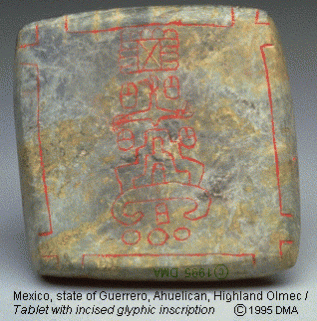
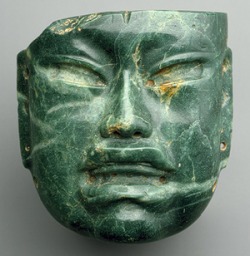
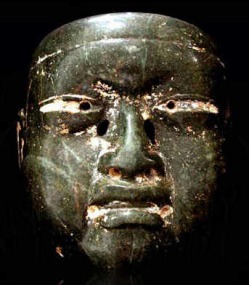
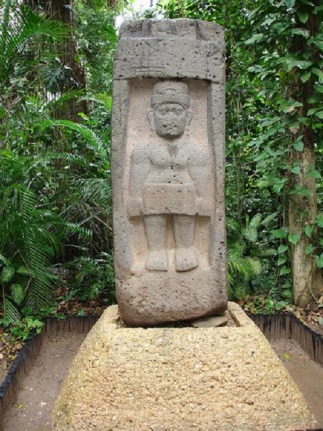
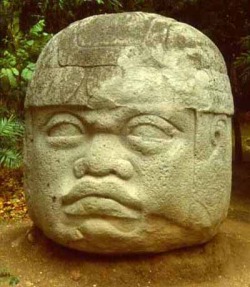
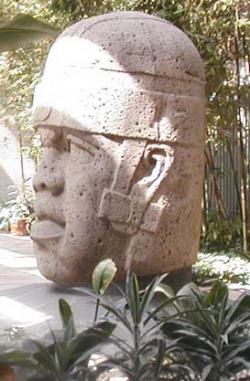
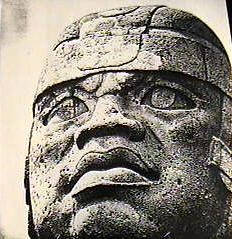
No comments:
Post a Comment